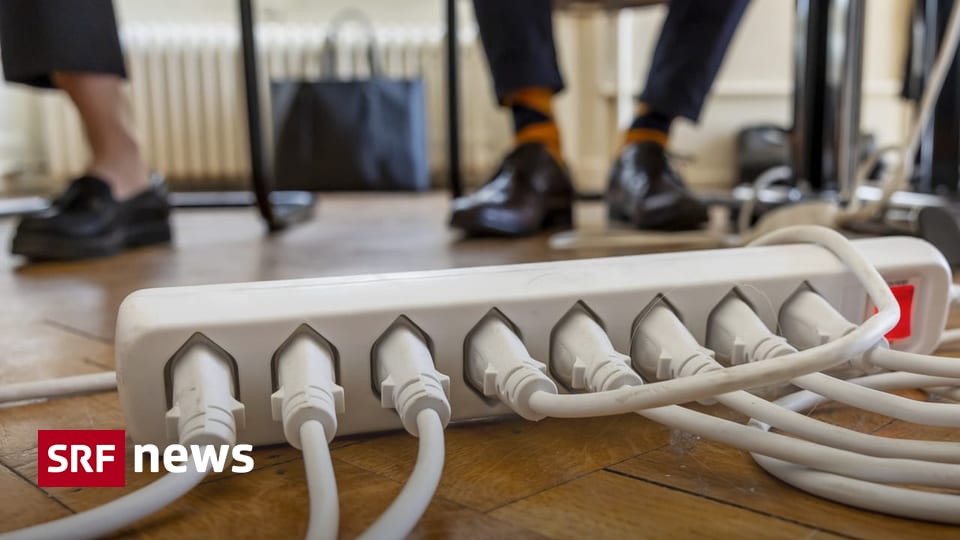Contents
Electricity consumption in Switzerland is steadily declining. Last year it was as low as it was in 2004. This despite more residents, more heat pumps and more electric cars.
For decades it was true that the more people and the greater the prosperity, the more electricity Switzerland consumed. It is now becoming increasingly clear that this development is no longer correct. “Over the past ten years, efficiency improvements have continually increased,” observes Michael Kost, who is responsible for analyzes and energy prospects at the Federal Office of Energy (BFE). These efficiency gains are now so large that they offset the additional electricity consumption due to the increasing population.
This development was driven by technical progress and new legal regulations for devices. In addition, recent increases in energy prices and mild winters have contributed to a decline in electricity consumption. The bottom line is that Switzerland consumed 56 terawatt hours (TWh) of electricity last year. The last time electricity consumption was this low was in 2004.
Savings of a few hundred francs
In an average household, heating consumes the most energy. Due to technical progress, the savings in this area are correspondingly large. This is exemplified by Markus Tschantré. He lives in the community of Tüscherz on Lake Biel.
Two years ago, the architect replaced the old oil, wood and electric heating systems in his apartment and five adjacent properties with a central heat pump: “The heat pump uses around 60 percent less electricity compared to the old electric heating system.” This corresponds to the calculations of the BFE, which assumes savings of 50 to 70 percent with a replacement.
When electric heaters were fashionable
Open box Close box
Today, electric heaters are considered “power guzzlers”. This was different in the 1970s and 1980s, when many of the heaters that are still in use today were installed. In times when there was an abundance of electricity, they were considered the ideal solution for heating buildings and at the same time increasing electricity consumption.
The new Gösgen (commissioned in 1979) and Leibstadt (commissioned in 1984) nuclear power plants delivered a lot of electricity in one fell swoop, even more at night than households and industry needed. Electric heaters were promoted accordingly: they consumed a lot of electricity at night by producing heat, which they gradually released during the day. The electricity producers, in turn, were able to get rid of their excess electricity using cheaper night-time tariffs. In addition, electric heaters were considered progressive at the time because they were an environmentally friendly alternative to oil heaters.
However, since electricity has tended to become more scarce in winter, electric heaters have been phased out and the federal government and the cantons are promoting the switch to energy-efficient devices. The funding contributions vary depending on the canton, but often amount to several thousand francs.
The lower electricity consumption also pays off financially, Markus Tschantré continues: “Each party pays electricity costs of 600 francs per year for the heat pump. That’s only half as much as before.”
1 / 3
Legend: As an architect, Markus Tschantré states that saving energy in construction has become significantly more important as gas and electricity prices have risen. SRF / Matthias Heim
2 / 3
Legend: Pipes lead from the heat pump to the surrounding properties, which were previously warmed with decades-old oil, gas or electric heating systems. SRF / Matthias Heim
3 / 3
Legend: In the municipality of Tüscherz on Lake Biel, a heat pump has been supplying six properties with heat since 2022. It has an output of 60 kW. SRF / Matthias Heim
Not only as a private individual, but also as an architect, Markus Tschantré has noticed a new dynamic: energy-efficient heating systems and economical boilers are in greater demand than ever since the rise in gas and electricity prices. There are also legal requirements: Electric heating in new buildings has been banned in all cantons since mid-2022.
Heat pumps are standard today
Roger Basler, managing director of the building technology company Meier Tobler AG, which also supplied the heat pump for Markus Tschantré, is also observing the same development. Around 45,000 to 50,000 heaters are installed in Switzerland every year. Nine out of ten new heating systems are now heat pumps. “The heat pump has now become the standard in Switzerland,” says Roger Basler.
A win-win situation
Open box Close box
Legends: KEYSTONE/Salvatore Di Nolfi
Replacing an old electric heater not only saves electricity and money, but also helps with the power supply. The BFE estimates that replacing an electric heater with a heat pump could save up to 2 TWh of electricity per year in Switzerland.
And this is especially true in winter, when electricity tends to be scarcer in Switzerland. For comparison: On a long-term average, Switzerland imports 4 TWh of electricity from abroad in winter. Theoretically, this would mean that if all electric heating systems were replaced by modern heat pumps, Switzerland would, in purely mathematical terms, only have to import half as much electricity.
And the industry is unlikely to run out of work for the time being: there are still around a million oil, gas and electric heating systems in operation in Switzerland that will need to be replaced in the coming years. “Due to the electrification of transport and the heating sector, increasing electricity demand is to be expected in the future,” predicts Michael Kost from the BFE. This means that the picture of declining electricity consumption in Switzerland is likely to change again in the medium and long term.
